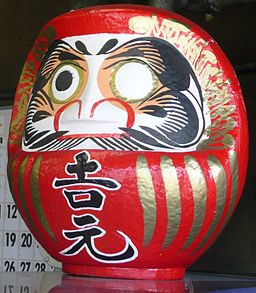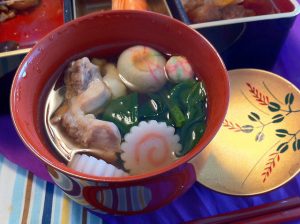January 1, 2019 - Mary, Mother of God
On New Years Day, Catholics will celebrate the Solemnity of Mary, Mother of God, with a feast. This celebration is the octave of Christmas. An octave is an eight day extension of the feast. In the modern Roman Calendar, only Christmas and Easter have an octave. This holiday is a celebration of Mary’s motherhood of Jesus. It is a reminder of the role she played in the salvation of humankind. The title “Mother of God” is a western derivation from the Greek Theotokos, which means “God-bearer”.Mary being chosen by God, the Father, to bring Jesus Christ into this world, and her willingness to do so is great cause for celebration. Without her role, Jesus would not have been able to die for the sins of humans, thus giving them a second chance at redemption.
The honoring of Mary as the Mother of God can be traced back to the Council of Ephesus in 431. By the 7th century, January 1st was observedas a celebration of the Maternity of the Blessed Virgin Mary. In the 13th century, the Feast of the Circumcision of Christ had come to replace the feast honoring Mary. However, in 1751, Pope Benedict XIV allowed Portugal’s churches to devote a feast to Mary on the first Sunday in May. This was because of a push in Portugal for an official feast day celebrating Mary’s divine maternity. Eventually, the feast was expanded to include other countries.
In 1914, the feast started to be observed on October 11. In 1931, Pope Pius XI extended the feast to the entire church. In 1974, Pope Paul VI removed the feast of the Circumcision of Christ from the liturgical calendar. He replaced it with the feast of the “Solemnity of Mary, Mother of God”, bringing Mary’s feast day back to the first day of the calendar year.
Learn more about Mary, Mother of God below:
January 1, 2019 - New Year's Day
January 1st as the beginning of the new year, didn't exist until 45 B.C., when the Julian calendar took effect. When Julius Caesar became the Roman emperor, he decided the Roman calendar needed to be replaced. The Roman calendar was based on the lunar cycle. Because of this, the calendar often fell out of sync with the seasons, and had to be corrected.
For the new calendar, Caesar got an astronomer, named Sosigenes, to help him. Sosigenes said that the Romans should follow a solar calendar. They calculated the solar year to be 365 and 1/4 days long. Caesar then changed the calendar so that the next year would start on January 1. He also added one extra day every four years in February to prevent the calendar from falling out of sync.
However, during the middle ages, the celebration of the new year, fell out of practice. This is because Sosigenes and Caesar made a mistake when they calculated the solar year. The solar year is actually 365.24 days, and not 365.25 days. This caused an error of eleven minutes per year. Over time, the error caused the calendar to be off by seven days in the year 1000, and ten days by the mid-1400s. To fix this, Pope Gregory XIII got an astronomer named Christopher Clavius to make a new calendar. In 1582, his Gregorian calendar was implemented, removing the extra days. It created a new rule that only one out of every four hundred years would be a leap year. This means that the years 1600 and 2000 were leap years, but the years 1700, 1800, and 1900 were not. This rule fixed the earlier problem caused by Sosigenes and Caesar's error. Since 1582, people around the world have celebrated the new year on January 1, without issue.
New Year's Day was one of the first four U.S. federal holidays adopted in 1870. The other three were Thanksgiving, Christmas, and Independence Day. In the U.S., the celebration of the New Year starts the night before, known as New Year's Eve. People often enjoy meals and snacks as they await the stroke of midnight.
Many traditional new year's dishes include legumes. Legumes are thought of as resembling coins, and thus symbolize wealth in the new year. An example is the use of black-eyed peas in traditional new year's foods. Other common customs include watching fireworks and singing songs to welcome the new year. In the United States, the most iconic new year’s tradition is watching the dropping of a giant ball in New York City’s Times Square at the stroke of midnight.
The practice of making resolutions for the new year is thought to have come from the ancient Babylonians. They made promises to earn the favor of the gods, and start the year off right. They would reportedly vow to pay off debts, and return borrowed farm equipment.
Talk with your kids about new year's traditions and resolutions with these books:
Shanté Keys and the New Year's Peas
Squirrel's New Year's Resolution
Łes el da̕ de aǫ nuevo! (it's new year's day!)
January 1, 2019 - Oshogatsu/Shogatsu/Gantan Sai
Oshogatsu is a Shinto and Japanese cultural holiday. It also goes by the name
Shogatsu, and Gantan sai. For Japanese families around the world, January 1st is the beginning of their most important holiday. For
Oshogatsu, families gather together, businesses close, and people visit shrines. Oshogatsu honors the god Toshigami-sama, the god of time and fertility. The god visits Japanese homes at the beginning of the year to bring good luck for the coming year. Before 1873, Oshogatsu was celebrated on the lunar calendar. Since 1873, when Japan adopted the Gregorian calendar, Oshogatsu starts on January 1. In Japan, the holiday is typically celebrated for three days to a one week. However, Japanese American families often celebrate only on January 1st.
Oshogatsu is known for its delicious food. A soup called ozoni is present in most family celebrations. There are many ways to make the soup. However, the soup always includes mochi (sticky rice cakes), fish broth, seaweed, miso, and various vegetables or meats. The way each family makes their ozoni indicates the area of Japan their ancestors are from.

One common tradition is mochitsuki. Mochitsuki is the making of mochi by pounding sticky rice into a sweet rice dough. Japanese Americans might do this activity at home with their family, or in a larger community, as a way to celebrate their culture.
Many families start their day by watching the first sunrise on January 1st, also known as hatsuhinode. They believe that Toshigama-sama comes with the first rays of sunlight. Japanese Americans use daruma dolls to blend the Western tradition of making New Year’s resolutions with the tradition of the painting in the eyes of the daruma doll. With these dolls, you paint the first eye when you make your resolution. You paint in the second eye once you have achieved your resolution.
Read this book with your kid, about Jasmine Toguchi's family celebration of the Japanese new year, complete with a mochi recipe:
Jasmine Toguchi, Mochi Queen
Learn more about the Shinto religion and Japanese culture with this book:
Shintoism






Add a comment to: The Origins and Practices of Holidays: Mary, Mother of God, New Year’s Day, and Oshogatsu